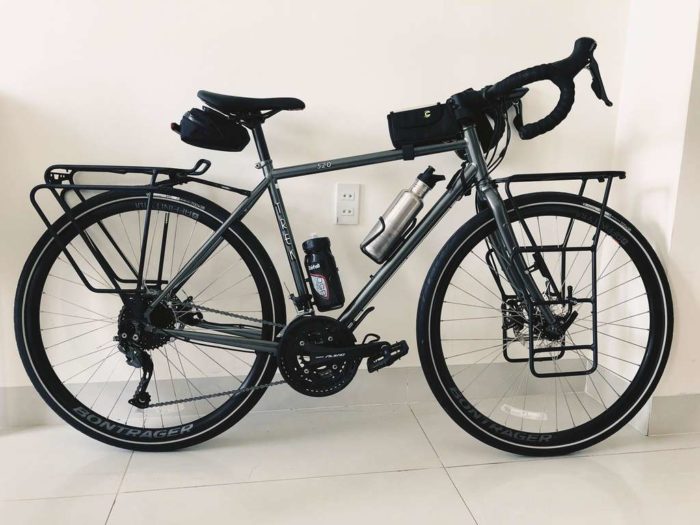How Pollution Happens: the Bicycle Analogy
Go to a doctor with back pain and you may learn the cause was shoes you wore last week. The body is a complex system. Complex systems work differently than we expect. You can push it one way today and it may respond a day later by moving in a different direction.
With a bicycle, pressing down on a pedal—just one element—moves the whole system forward—a different direction than you pressed. We’re used to that system. Few of us are familiar with the environment and pollution.
Where Does Litter Come From?
Having picked up litter daily for over four years, I’ve pondered on where litter comes from. It’s easy to say the hand of the person who dropped it, but that source is only proximal. While much packaging makes it into trash cans, then landfills, with the amount we produce, a lot of it will end up litter, no matter how vigilant everyone tries to be.
One person with one plastic bottle is just an element. What about the system?
Once we pay for, say, a plastic bottle, we’ve contributed to litter, it seems to me, no matter how we handle it afterward. If some fraction of plastic produced will become litter, how we handle our waste as individuals is important but won’t stop it.
Litter comes from a system that produces so much packaging, at least the packaging litter.
The Bicycle Analogy
I see two places that determine our litter.

The first place is direction—how we direct the system, like toward creating more packaging and takeout. Choosing the direction of our systems is like the steering on a bicycle.
Steering our polluting system happens in boardrooms and executive teams of places like ExxonMobil, BP, Chevron, Dow, DuPont, McDonald’s, Starbucks, Coca-cola, Pepsi, and Dunkin Donuts.
The second place is motive force—what drives the system. The force driving the polluting system is money paying for goods and services provided by those companies and their peers. Once those companies choose their offerings, our buying them drives the system like pedaling a bike does.
When we buy disposable goods that will become litter and pollution, we drive the system. Maybe my hand didn’t drop that particular wrapper, but if I paid for its production, I contributed to its making its way to the bin.
Summary: how the system works
In summary, the executives steer the system toward polluting and we power it by paying for it.
You may not want to, but the system follows our behavior, not our wishes. Once we pay our money for a bottle of water, we drive the system. Every bottle of water, every SUV, every flight means someone paid to drive that system.
Making a system more efficient is like greasing the chain. It leads to more pollution with less effort. Want to reduce pollution and litter? One way is to change the system’s direction. Corporate executives have that authority. If you’re one, I hope you’ll act. If you want help, I’ve coached many managers and executives who could set direction for their firms.
Even if you can’t change direction, you can choose to pedal less. You can stop pedaling. In other words, you can choose not to buy things that pollute, like takeout and packaging. You need never buy another bottle of water again. Don’t stop at one action. Use that action to learn more, do more yourself, and then lead others. Leading others is the most you can do because it leads to more people acting.
Read my weekly newsletter

On initiative, leadership, the environment, and burpees
Pingback: We will soon see plastic the way we see asbestos, leaded gasoline, and marketing cigarettes to children » Joshua Spodek